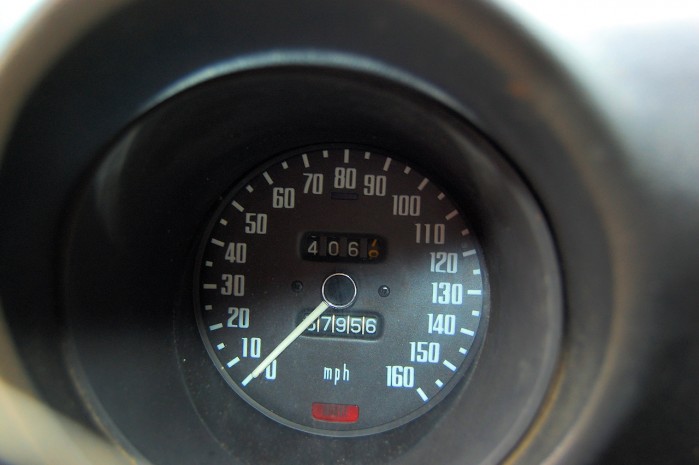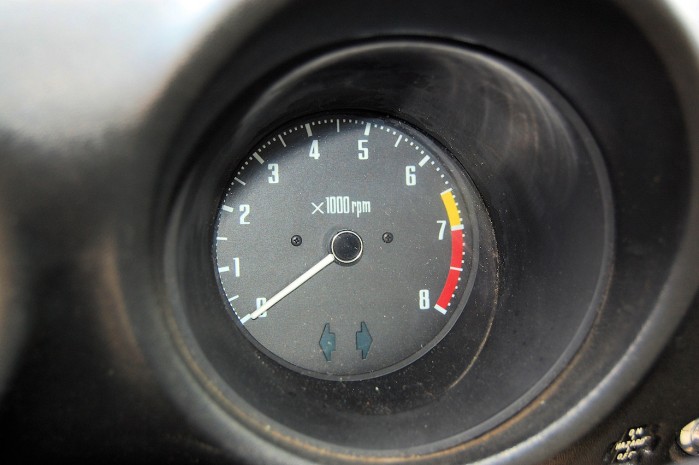In this article we discuss the Nissan Datsun 240Z gauges or instrument cluster that is located in front of the driver and steering wheel. Information on the gauges that were installed from the factory is provided in this article.
The Nissan Datsun 240Z has a total of five gauges that were installed from the factory. The first two Datsun 240Z gauges are the speedometer and tachometer that are located behind the steering wheel. The first Datsun 240Z speedometer went from 20 mph to 160 mph. This was changed on later cars to be from 0 mph to 160 mph (miles per hour). The tachometer is located to the left of the speedometer and goes up to 8,000 revolutions per minute (rpm). There is yellow line that starts at the 6,500 rpm mark. This mark goes to 7,000 rpm where it changes to red and goes all the way to 8,000 rpm. The last three gauges are located in the top of the dashboard directly above the radio and climate controls. The gauge on the far left is a combination gauge. This gauge houses the water temperature indicator in the top half of the gauge. The bottom half is an oil pressure gauge. The gauge in the middle is another combination gauge. It houses an ammeter gauge in the top half and a fuel gauge in the lower half of the gauge. The last gauge to the far right is a time clock.
Above photo of the 1972 Nissan Datsun 240Z Gauges and Instrument Cluster by David Aughinbaugh II and EngineMark. Feel free to share with attribution.
Above is a photo of the 1972 Nissan Datsun 240Z Speedometer gauge by EngineMark and David Aughinbaugh II.
Above is an image of the tachometer for a 1972 Nissan Datsun 240Z by David Aughinbaugh II and EngineMark.
To learn more about the Nissan Datsun 240Z, a 1970s vehicle, visit the other pages that are found in the article menu. You can also learn about the Datsun 240Z specifications on this page.




